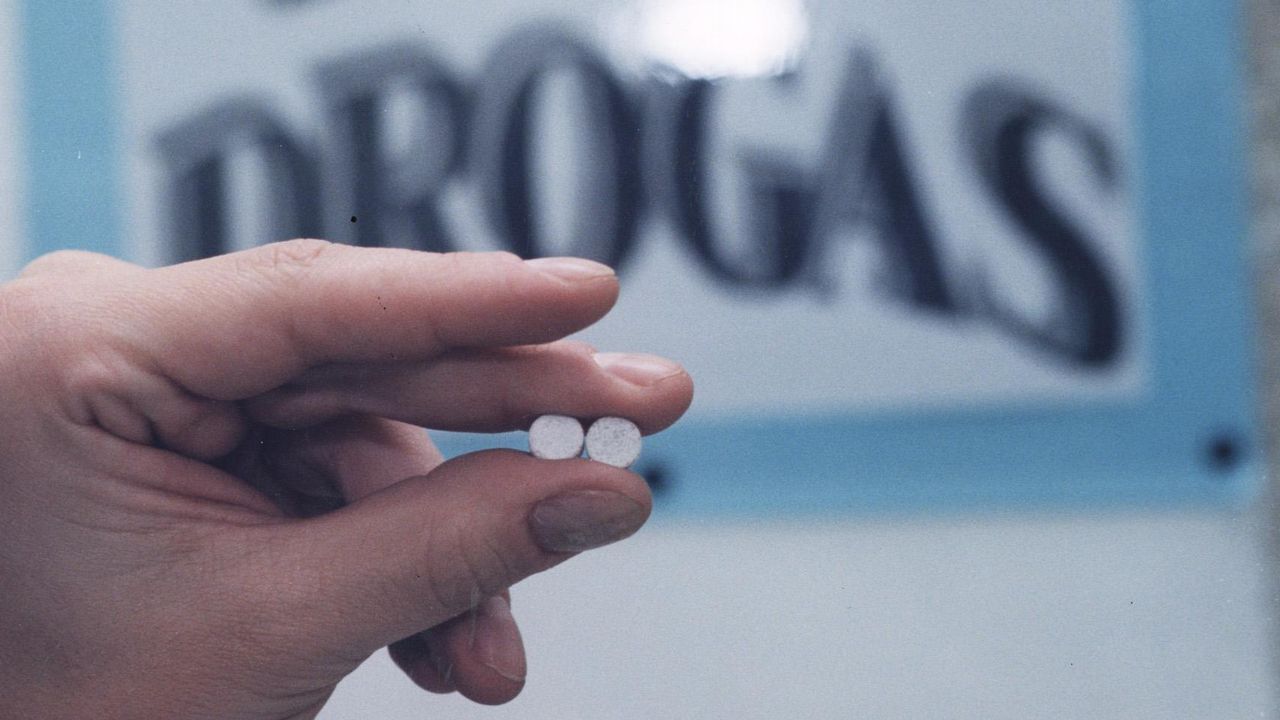Reflection on Drugs in Adolescents
The Reflection on Drugs in Adolescents , becomes a series of advice to all adolescents about the damage that they can cause to their body. In the following article we will know everything related to this topic and something more.
Reflection on Drugs in Adolescents
Experts consider that illegal drug use is usually very common among adolescents, since with the passage of time a significant increase in it has been observed, this fact generates serious and multiple consequences both for young people and for the society. In the following work we will establish important aspects related to this topic.
In the world there are a large number of people who are consumed by the vice of drugs, among them there are many adolescents who are immersed in them, so this article is made in order to bring reason to all young people and adolescents who are immersed in it and who become aware that these classes of substances become harmful to their health.
If you are a person who is being consumed by these substances that are very harmful to your health, we invite you to read this article in detail and find a way out of your problem. Mainly the way out is found in seeking the Lord Jesus, who I assure you will be the only one who can help you get out of this problem and who is also the only person who will bring peace to your soul and your life. heart.
Adolescents and Drug Use
Now, let’s see at this time what becomes the real problem that this causes in the lives of children, adolescents and young people today. First let’s start with the magnitude of the problem that these substances cause to them and know a small reflection on Drugs in Adolescents.
Magnitude of the problem
The use of illegal drugs among millions of adolescents has increased in recent years. The data are those that show that practically 1 out of every 4 young people has come to consume certain classes of substances in the course of the last month, among these are alcohol, tobacco, as well as cannabis derivatives and also cocaine. What are the most commonly used substances?
This increase in consumption cannot be explained by a single cause. Certain of the most important factors that come to explain this type of phenomenon to a large extent have to do with the great availability of substances, the increase in families with problems that are relational and also the increase in mental disorders .
The pre-existing data are those that show a high prevalence of comorbidity between substance use disorder and mental disorders in some adolescents, which is between 65% and 75%, which is about 3 out of 7 .
This kind of situation is what entails, in clinical practice, that many of the adolescents come to be treated in mental health services for a type of mental disorder that they are carrying out a type of abuse or that they have a type of dependence on substances, which comes to interfere with the symptoms that the patient presents and, consequently, he finds himself hindering both the evaluation and diagnosis process and the possible evolution of his main disorder.
The most prevalent mental disorders in the vast majority of adolescents who are drug users are the following that we will mention:
- Autolytic Behaviors
- Attention Deficit Hyperactivity Disorder
- affective disorders
- Anxiety Disorders
- conduct disorders
- Eating Disorders
- psychotic disorders
The results of the various studies on the use of drugs during adolescence come to show the serious and multiple consequences that they can generate, both physical and psychological, as well as social (the latter reach be school, family and relational).
Sufficient evidence is available to ensure that the repercussions of consumption, which become much more dangerous for adolescents than for adults, both in the harmful effect of substances and in the adverse effects that are referring to psychosocial adjustment, which in the case of some of the young people, which are much more pronounced and which decrease with increasing age of the consumer.
At the same time, it becomes foreseeable that more or less 10% of adolescents who are consumers have some kind of repercussion that is derived from drug use, either directly (including intoxications, mental disorders that are induced, among others) and indirectly such as motorcycle accidents, falls, burns, as well as fights, among others.
Treatment programs for adolescents who are drug users are those that indicate that they become effective in reducing the amount of consumption, which produce positive effects in reducing criminal activity, as well as than the remission of psychopathology (which present a lower amount of hostility, less suicidal ideation) and are also those that improve academic performance. The medical literature is the one that shows that being in a treatment becomes better than not being in it.
The Involvement of Pediatric Emergency Services
One of the first types of recipients of the consequences of drug use becomes pediatric emergency services. The reasons why young people tend to resort to these are usually related to alcohol, injuries or trauma, poisoning or overdose and self-injury with drugs that usually arrive to be much more frequent in the cases of women, the care being concentrated essentially on the weekends.
Emergency services can play a key role in the rapid detection of adolescents who become drug abusers, since they tend to consult these services much earlier than in the services that are specialized in drug abuse. the adictions. Many of the diverse ones are those that demonstrate the great efficacy of both prompt intervention in the same emergency services as well as increased linkage to specialized treatment units.
At present, with the data that is available, for example, in the regions of Catalonia, it is not possible to know what the real repercussion will be in the emergencies of the increase in drug use by adolescents who have occurred in the course of the last decade. Constantly, the various emergency professionals are the ones who notify and they are also the ones who diagnose only the reason for the consultation, even though during their examination they have come to detect the consumption of toxic substances.
Legal Implications
A query was made to the various legal services of the Official College of Physicians of Barcelona about what should become the procedure that should be followed in these cases. The answer to this became that in order to carry out a kind of toxic test in the urine or in the blood “At all times the consent of the minor must be requested, and in any case if he does not become a “mature” person ” their parents.
If the minor becomes a “mature” person (this means, has the capacity to decide on health matters) and is denied, the professional cannot under any circumstances make the determination. In the event that the adolescent refuses to carry out this procedure, however, it becomes absolutely necessary (this means in risk situations) to be able to carry out the determination, what is required is the authorization of the parents, in order to save the life of the minor.
In the case of the regions of Spain, when it comes to talking about the rights of minors in the health field, Catalan Law 21/2000, of December 29, on the rights to information must be taken into account which are related to health.
The autonomy of the patient and also the clinical documentation, as well as its counterpart state law, the Basic Law 41/2002, of November 14, a basic regulation of the autonomy of the patient and also of the rights and obligations in the matter of information and clinical documentation.
Basic Law 41/2002 establishes a class of new age of majority in relation to the health field at 16 years, whether or not there is emancipation. In this case, the law considers that the minor has full capacity to decide regarding the relationship with their health, so consent is not required by the representation of parents or even guardians, except when the physical state or the mental state does not allow the minor to be able to take charge of his situation.
Likewise, in cases of serious risk, according to the physician’s criteria, the parents must be informed and their opinion must also be taken into account for what is the corresponding decision making. . It is a class of understanding of iuris tantum:
“if the doctor who is responsible for the assistance considers that the minor, whether competent or not, presents a class of situation of serious risk to life or health inherent to a specific health intervention , which has the obligation to inform the parents so that they can exercise the powers that are inherent to parental authority.
In all those cases in which the adolescent becomes mature and presents an acute level intoxication and, therefore, his clinical situation makes it manifestly incompetent, it is clear that all those medical interventions that become necessary (this is a toxic analysis if that is indicated) and the parents should be informed even if the minor refuses this.
Since it would be before the situation in which the same law comes to establish the information and also the consent subrogated to the parents or even to the legal representatives.
Ethical Implications
In parallel, in the same way, a consultation class was held at the “Institut Borja de Bioethics” (which is the Ramon Llull University), a type of institution that collaborates with this hospital and in the same way is the one that poses the ethical dilemma: The professional must come to face a kind of situation that presents some contradictions between about 2 of the basic ethical principles that are:
- The Principle of Autonomy
- The Beneficence Principle
And, in turn, in the same way with the ethical duty of confidentiality with respect to patient information. Each of the situation will have to come to be valued in its context. A possible solution to be able to tip the balance would be to apply the following recommendation that we will mention: “Respect for the principle of autonomy is one that inevitably requires the principle of responsibility. In front of all the patients who are vulnerable is where the principle of autonomy must be interpreted within the framework of the responsibility of ethics” .
Currently there is a kind of tendency to carry out actions from the extreme of autonomy and also from a praxis that is purely defensive, “doing what the law strictly establishes.” The problem becomes that day-to-day life is plagued with situations that are unclear or more debatable from an ethical point of view and for which the formulations that are legal are not clear either.
Short Thoughts on Drugs
By means of this brief writing, what is wanted is to make adolescents reflect on an issue that tends to erroneously reduce the individual internal debate. In order to take it to the collective which is its main objective. Because they are aware that this type of debate has already been carried out, however, they are also aware that its results have not been applied, so we have decided to carry it out.
Reflections on Drugs
Some of the reflections that should be taken into account are some of the aspects that these substances produce and do in the lives of adolescents. For example:
- Drugs don’t release
For many, drugs amuse, disinhibit, just as on many occasions they encourage, until they reach the point where they depress and begin to cause a distension… However, Drugs do not liberate anyone. But don’t worry, there is a solution and this is that you accept Jesus as your only and sufficient savior and send him with all your heart, so I assure you 100% that only he can help you with this problem and free you from the chains of drugs.
- The Market Absorbed the Drug Product, Turning It into a Product
This is demonstrated in its benefit regime, currently it is expressed in the law of supply and demand. The drug market, both legal and illegal, is managed through advertising, money, alienated work, merchandise, among many others.
- Drug Illegality Merges With Permissiveness
Marginalization with the continuation of the capitalist cycle. Despite continuing to be illegal, they are usually manifested as a type of social control instrument which is intended mainly (and not only) for the layers that are least favored by the system, thus, as a weapon of capital that on many occasions it serves to criminalize and on others to lull us to sleep.
Therefore, demanding that the State legalize it becomes an absurd objective from the moment in which a good part of drugs are defined, among other characteristics, as illegal, becoming part of their essence, being the illegality that causes much of its effectiveness.
Its function, which is peacemaker, is revealed under these conditions because the State, over and above the legal system, can corruptly play with the laws, applying them when and to whom it suits them. Equating at all times the culture of illegality with the counterculture of rebellion is usually the main mistake, in the same way that doing so with respect to legality becomes.
- The Hierarchy in the Power of the Effect of the Different Drugs
These come to manifest in the hierarchy of the different social classes, which are classified after what is the neoliberal restructuring of Capitalism. Therefore, alcohol, like drugs and tobacco, are administered to all social sectors, descending in social class as the type of effect of the drug increases.
In this way, many come to drugs such as heroin or even what is called crack, which are promoted mainly in the various marginalized social sectors and also in the most impoverished. The relationship of the effect – social position can be shown as inversely proportional.
This is reflected in what is the territorial level, where the different areas of the cities are usually differentiated in terms of the function of marginality, drugs being one of the main causes of it.
- The Social Relationship Established in the Purchase – Sale of Drugs
This becomes the same that is established with the other merchandise, this means, a kind of power relationship. Where some have the power to manufacture them and be able to market them through alienated work, and others who only have the power to consume them under social conditioning. As long as this kind of relationship is not eliminated, drugs will never be treated as a personal option without further ado. There are, therefore, about 2 types of levels when dealing with this kind of topic, which are:
- The One with Pleasure – Individual Pain
- That of the Economic and Social Effects
Each of the compounds of the various factors. Social movements are the ones that must take into account all these levels and factors when it comes to positioning themselves. It is not about a kind of position of affirmation or denial of the use of drugs, but of a whole type of continuous elements that need a treatment that is differentiated from the analysis. This becomes that way insofar as it is not the same as the so-called marijuana as heroin, nor as addiction as fun, as, for example.
- The Apology of Drugs within the Capitalist System
Through this, it thus becomes an apology for the relations of authority of the same type of capitalist system. In the meantime, the various levels of analysis are not differentiated, so this will continue to be the case.
- Puritanism and Total Abstention
These become in the same way distorted reflections of the stylized behaviors of capitalist society in the various social movements. On certain occasions, the reactivity before a type of negative fact comes to create equally obsolete behaviors and postures.
The demonization of drugs is one that suffers the same fate as its own apology. Neither of the 2 positions are those that comprise a real type of analysis, but a part of it, this means that they take a part for the whole. The same kind of lack of understanding regarding the other issues is what shows that drugs become an exception class in theoretical insufficiency.
That individuals stop using drugs is perfectly respectable, however, advocating this kind of position and staying in it is not what facilitates the creation of a kind of collective response, rather more well it slows it down. The drug should not be abolished, the acts of drug addiction, the misery that it creates, its market, among many other things, must be abolished.
- Drugs are not part of the solution nor part of the problem
They become what they are, despite the fact that social relationships have distorted them. Its effects on the human organism of people are clearly different from the social effects that they generate, in a large society, especially youth with very different social relations, the solution to any type of problem would not be necessary, because that their abolition as the commodity and the element of illegality would make them a kind of instrument of pleasure and not a kind of escape or performance enhancement.
- Drugs Are Part of Self-Management
At a much more concrete level, we can come to understand that drugs are the ones that are part of the self-management of social movements, including the sale of alcohol at parties and concerts, mainly. However, in the same way we can see the need to assume their insufficiency when no other way of doing it can be found.
We do not get to consider what is negative in this way, but the dependence of the human being with respect and its practical exclusivity. It is very necessary, from this point of view, to be able to find new ways of self-management.
Summary
It is considered that four important sections defined as a reflection of the conceptual Drugs on drugs are manifested in the writing, thus showing the consequences, intervention and a significant analysis proposal, in this way a better identification of this topic is achieved.
For this reason, the first section offers a clear explanation of drugs and the way in which it has prevailed over time, since it reflects an approximate increase of 60% of consumers, which are located in South America, as well as Likewise, an index of 63% of students in Colombia who claim to have used some type of drug can be seen.
In the case of the second section, it is about how drugs influence the dopaminergo system as well as the way they affect the central nervous system and the negative effects they cause on executive functions, for this reason the experts establish various arrogance based on political models and economic that can reduce the supply and demand of it.
As for section three, a detailed explanation about demand is offered, based on two models, in the first the consumption is shown, and the way how it works also establishes a direct approach to the consequences that arise at the neurological level, in the case of the second that seeks to understand the background of the decision and action of consumption, taking into account a series of coherent results, although for many inconclusive.
Hence, a kind of proposal is structured that seeks to explain the choice and what drug use is through the integration of a cognitive thesis such as intentionality, which is explained by the theory of planned behavior and also the neuropsychological thesis with executive functions with elements such as decision making.
In addition to planning and inhibition and the fourth section that refers to vulnerability in adolescence to make choices and plan short-term goals with certain future disadvantages and the possibility arises that the intention that is negative and high maturity in Faith which would lead to the inhibition of choice and consumption, as opposed to positive intention and low maturity of FE which would conclude in the choices and consumption of a positive trend.
Conclusions
Drug use has increased considerably in recent years. This type of problem in adolescents becomes very harmful and the consequences of consuming them can affect all areas, including:
- The Increase in School Failure.
- A Higher Prevalence of Mental Disorders.
- A worse psychosocial adjustment.
In this same period, the pattern of alcohol consumption has also changed, as well as that of substances, which have come to focus on weekends. The first services to receive the consequences of abusive and very harmful consumption of adolescents are usually pediatric emergency services.
The lack of data in the autochthonous field is what limits the extrapolation of the conclusions, although they do not invalidate them. The Catalan Law dated 21/2000 and also the Basic State Law 41/2002, which regulate the autonomy of the patient, which establishes a new age of majority at 16 years in relation to what is the health field, it has come to imply a change in the concept and also in the practice of health professionals who work with adolescents.
However, when it comes to treating an adolescent who may be abusing these substances, professionals may come across moments in which they must decide on concepts that are not clearly defined, such as maturity, competence, risk, benefit of the intervention, confidentiality, among many others.
Young people usually tend to minimize and also normalize substance abuse and are the ones who can immediately prioritize the benefit (it is better not to say anything than to let their parents know about this situation).
Faced with this situation, health professionals are presented with a type of dilemma, what should prevail: the autonomy of the patient or the benefits that may be generated from the action? In the balance to reach a decision, the individual case must be considered, as long as it is taken into account that: The criterion of autonomy must be respected and prioritized.
In order to establish the possible beneficence of what the action is, the risk factors of all adolescents for the problematic consumption of said substances must be evaluated. Among some of these risk factors, the dimension should be assessed:
- Personal: Personality traits such as impulsiveness, dissocial traits, in addition to the presence of medical or psychiatric illnesses.
- B) Family : Such as the presence of psychiatric illnesses of the parents, as well as the presence of intra-family conflict or the consumption of the parents.
- C) Economic and Environmental : Like where they live, with whom they get to relate, the types of friends, among others.
If it is concluded that the adolescent is carrying out a type of problematic consumption of substances, the beneficence of the action should be prioritized ahead of the dubious autonomy of the patient.
It is of great importance to highlight that an early start in the intervention can become preventive, both from the appearance and also from the crystallization of problems related to drug use.
If you liked our article on Reflection on Drugs in Adolescents, we invite you to visit the following links which may be of interest to you:

Hello! Let me enthusiastically introduce myself as a dedicated blogger fueled by an intense passion for meticulously crafting insightful and well-researched blogs. My mission revolves around providing you, dear readers, with a veritable treasure trove of invaluable information.







